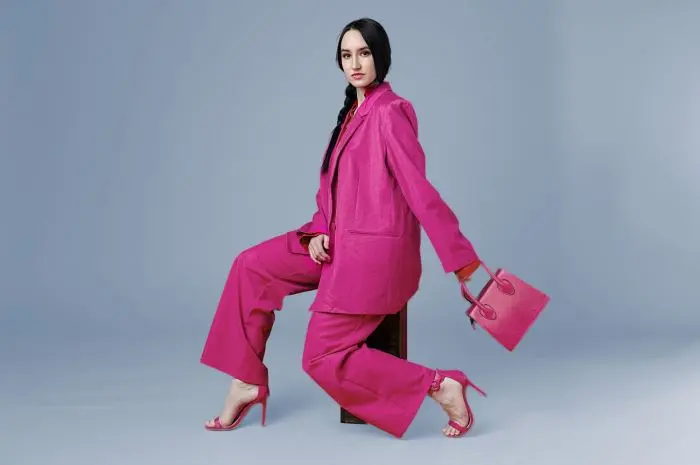In recent years, the fashion industry has witnessed a significant shift towards sustainability. The rise of the ‘Eco-Chic’ movement marks a transformation in how we perceive fashion, emphasizing ecological responsibility and ethical practices.
This article delves into the burgeoning world of sustainable fashion, examining its impact and the driving forces behind its growing popularity.
Understanding Sustainable Fashion
Sustainable fashion is a movement and process fostering change in fashion products and the fashion system towards greater ecological integrity and social justice.
It encompasses a range of issues like environmentally friendly production processes, ethical labor practices, and the longevity of garments.
This holistic approach aims to reduce the environmental footprint of fashion while promoting ethical standards for the workforce involved in the production process.
The Environmental Impact of Fast Fashion
The conventional fashion industry, particularly fast fashion, has been criticized for its detrimental environmental impact. It is a significant contributor to water pollution, waste production, and greenhouse gas emissions.
The fast fashion model, characterized by rapid production and a continuous cycle of new trends, encourages a disposable approach to clothing, leading to massive waste.
Drivers Behind the Sustainable Fashion Movement
- Environmental Awareness: Increasing awareness of environmental issues, such as climate change and resource depletion, is a significant driver of sustainable fashion. Consumers are becoming more conscious of their ecological footprint and seeking ways to mitigate it through their clothing choices.
- Ethical Concerns: Revelations about poor labor conditions in the fashion industry have sparked a call for ethical production practices. There’s a growing demand for transparency in the supply chain and fair treatment of workers.
- Technological Innovations: Advances in technology have facilitated the development of eco-friendly materials and sustainable production processes, making sustainable fashion more viable and accessible.
- Cultural Shifts: There is a cultural shift towards valuing quality over quantity and a preference for unique, ethically made garments over mass-produced clothing.
Key Elements of Sustainable Fashion
- Use of Eco-Friendly Materials: Sustainable fashion promotes the use of materials that have a minimal environmental impact, such as organic cotton, bamboo, and recycled fabrics.
- Ethical Manufacturing Processes: This includes ensuring fair wages, safe working conditions, and rights for workers in the fashion industry.
- Durability and Timelessness: Sustainable fashion focuses on creating high-quality, timeless pieces that transcend seasonal trends and last longer, reducing the need for frequent replacement.
- Circular Fashion Model: Emphasizing the reuse, repair, and recycling of garments to create a closed-loop system, minimizing waste and environmental impact.
Sustainable Fashion Brands and Designers
Numerous brands and designers are now embracing sustainable practices, offering eco-friendly and ethically made clothing. These range from luxury designers to affordable labels, making sustainable fashion accessible to a wider audience.
The Role of Consumers in Sustainable Fashion
Consumers play a crucial role in the sustainable fashion movement. By choosing to purchase from sustainable brands, opting for quality over quantity, and taking care of their garments to extend their life, consumers can drive demand for more sustainable practices in the industry.
Challenges Facing Sustainable Fashion
One of the main challenges is the higher cost of sustainable garments, which can be a barrier for some consumers.
Additionally, there is a need for more widespread awareness and education about the importance of sustainable fashion and how to identify truly sustainable practices.
Sustainable Fashion and Digital Platforms
Social media and digital platforms have been instrumental in promoting sustainable fashion. They provide a space for advocacy, education, and community-building around sustainable fashion practices.
Influencers and bloggers specializing in sustainable fashion offer inspiration and practical tips for adopting an eco-friendly wardrobe.
The Future of Sustainable Fashion
The future of sustainable fashion looks promising, with an increasing number of consumers and brands embracing this movement. Innovations in sustainable materials and production methods continue to evolve, further enhancing the viability of sustainable fashion.
As awareness grows and technology advances, sustainable fashion is poised to become the norm rather than the exception.
Conclusion
Eco-Chic symbolizes a revolution in the fashion industry, one that values the planet and people alongside profit. This movement is not just a passing trend but a fundamental shift in how we produce and consume fashion.
By adopting sustainable practices, we can enjoy fashion in a way that respects our environment and upholds ethical standards. Sustainable fashion is not just about clothes; it’s about making a statement of our values and commitment to a better world.
In embracing Eco-Chic, we pave the way for a fashion industry that harmonizes style with sustainability, creating a legacy of positive impact for future generations.





